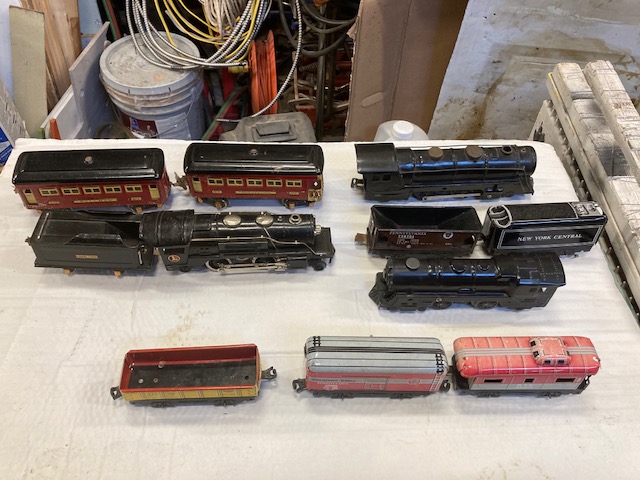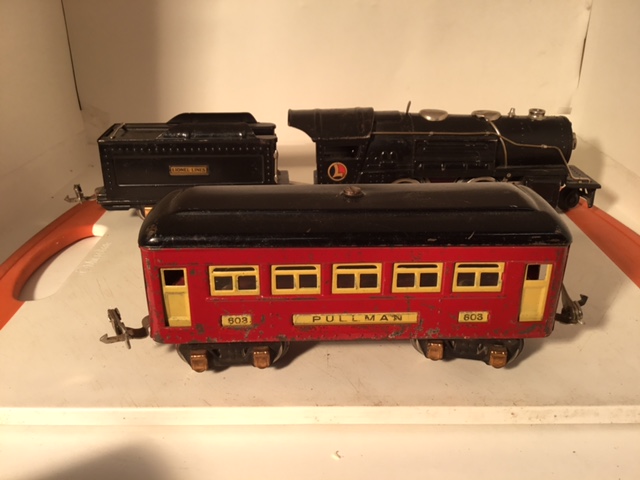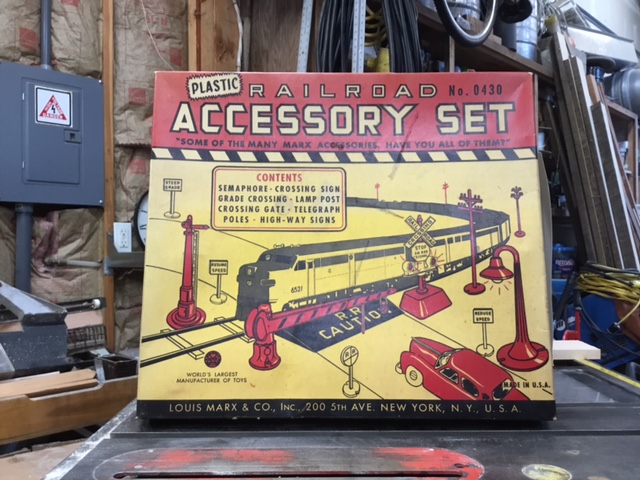By Jack Carter
Lionel and Marx tin trains for sale. #430 Marx accessory set also for sale. Email no1wireman@gmail.com for more info and pictures.




Jack
You are browsing archives for
Lionel and Marx tin trains for sale. #430 Marx accessory set also for sale. Email no1wireman@gmail.com for more info and pictures.




Jack
On June 18th, the city of Skykomish is hosting Tunnel Days, a city event honoring the GN railroad and James Hill. There will be a train swap meet included in the event. Vendors can bring their own table, one table per vendor, and set up at no cost. There is no admission fee and there is room for 20 vendors inside the fire truck barn with all others outside by the little train depot. The indoor sites will be on a first come basis. Table space can be reserved by emailing mawalcker@aol.com. The meet will be from 9am to 3pm, with a pancake breakfast at 7am and many family fun events planned for the entire day.
Michael
Click here to read the May 2022 issue of The Flimsy Board from the Bremerton Northern Model Railroad club.
Click here to read the May 2022 issue of The Skagit Valley & Whidbey Clinic Newsletter.
I am looking to share a ride to the PNR convention in Eugene. I can meet at the Edmonds Ferry or anyplace between Port Townsend and Tacoma on the West side. I have a room, just need a ride.
You can contact me at: (360) 437. 8003
CJ Riley
4D members, we need your help. We are scheduled to host the PNR regional convention next year. Putting on a regional convention takes a lot of work by a dedicated group of people. The convention will take place in Tacoma (tentatively May 18-21, 2023). We are two years behind schedule planning the event because of the pandemic, but we can make it happen if people pull together and step up to work as a team.
We still need volunteers for the following committee chairperson positions as soon as possible:
Treasurer
Publicity/website
Non-Rail
Awards and Favors
Layout Tours
Prototype Tours
Souvenir (shirt/hat)
Transportation
As we get under way, committee chairs will need help on their various committees. If you are willing to help or have questions about what is involved, please contact me at ananas99@klaidlaw.net or call me at 253-495-8351.
Kurt Laidlaw
2023 PNR Convention Host Committee Chair
Click here to read the March 2022 issue of The Skagit Valley & Whidbey Clinic Newsletter.
Click here to read the March 2022 issue of The PSGRS Newsletter from the Puget Sound Garden Railroading Society.
Click here to read the March 2022 issue of The Flimsy Board from the Bremerton Northern Model Railroad club.
What awaits you at the Rails to Sails Train Show?
There will be three different sizes (Scales) operating during the show.
The Centerpiece of the show will be an N Scale modular layout covering an area of approximately 31′ x 36’. This layout is being assembled and operated by members of the 4dNTRAK N Scale group that represents the National Model Railroad Association in the Pacific NW Region. The group has been in operations for over 20 years, and no layout has been repeated, and this one is no exception. For the first time the layout will include ramps for loading cars onto a ferry that will travel across the layout and unload the railcars onto another ramp after the journey. There will also be a Scavenger Hunt with items located on several of the modules.
N Scale represents model railroading at a size of 1 foot = 160 feet.
We hope you will come to see this unique modular layout.
A permanent part of the exhibit is a an HO Scale model of the Northern Pacific Railway’s Half Moon yard. Where, with the push of a button, you can send a train off to Seattle or Portland. You can see the real rail yard across the street from the museum.
Visit the G Scale layout and challenge yourself to “Deliver the Goods” by putting a train together, and going to different companies, deliver full cars, pick up empty cars and return them to each supplier.
Then you can visit one of several booths with representatives from various railroad related organizations. Come by and see us for First Annual Rails to Sails Train Show. The show runs from March 17 to 20 and is open from 10am to 4pm each day. Thursday night is “Free Third Thursday” from 5pm to 8pm.
Please join us at the Foss Waterway Seaport Museum and Event Center located at 705 Dock Street, between the Northern Pacific Railway’s Half Moon Yard, and the Foss Waterway. Take I-705 to the 4th Street bridge, turn right and cross the bridge. 4th Street becomes Dock Street as it turns to the right. The museum is the second building on your left.
We’ll be seeing you at the Train Show!!!!!!
Bud